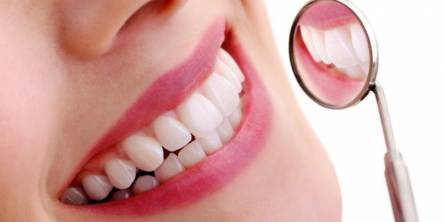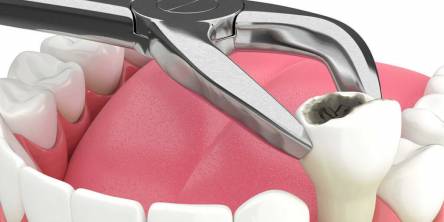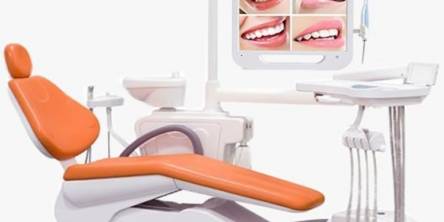6 Facts About Tooth Pain: Understanding and Managing Oral Discomfort

Tooth pain is a common but frequently misunderstood condition that can have a substantial influence on one's quality of life. Tooth pain can occur for a variety of causes, ranging from minor, short-term sensitivity to severe, devastating pain. Understanding the underlying reasons, along with appropriate treatment options, can aid in managing and alleviating discomfort. Here are six important facts about tooth pain that everyone should be aware of.
1. Symptoms
Tooth pain can often be accompanied by other symptoms that may help in the diagnosis of the underlying problem. Swelling in the gums or face may indicate an infection or abscess, whereas redness indicates inflammation or gum disease. Persistent poor breath might indicate illness or decay. A fever might signify an illness spreading and requires immediate medical intervention. Toothache can occasionally spread to the ears or jaw.
2. Causes of tooth pain
Tooth pain can be caused by a variety of factors, each with its own set of treatment options. The most widespread causes are cavities, gum disease, tooth fractures, abscesses, and tooth sensitivity. Cavities form when bacteria destroy the tooth enamel, revealing the sensitive inner layers. Gum diseases, such as gingivitis and periodontitis, cause gum inflammation and infection, which can result in tooth pain.
A cracked or broken tooth can cause severe pain, particularly when chewing. Bacterial infections can cause pus pockets (abscesses) in the tooth or gum, resulting in severe pain. Enamel erosion or gum recession may expose sensitive dentin, causing pain while eating hot, cold, or sweet foods. Recent dental procedures may also trigger temporary pain as the teeth and gums recover.
3. Diagnosis
Accurate diagnosis is critical for successful treatment. Dentists use a variety of ways to diagnose the reason for tooth pain. A close examination can reveal visible warning signs of decay, gum disease, or injury. X-rays are used to detect hidden problems such as abscesses, fractures, and decay under the surface.
Percussion testing includes tapping the teeth to detect sensitive or painful spots. Thermal testing, which uses cold or hot stimuli, can evaluate sensitivity and nerve health. Electronic pulp testing evaluates the health of the tooth's nerve.
4. Treatment options
Treatment differs according to the source of tooth pain. Fillings treat cavities by removing the decaying section and filling it with dental material. Root canals cure infections and severe decay by removing the diseased pulp and sealing the tooth.
Antibiotics are given to treat infections by eliminating bacteria. Gum disease treatment involves scaling and root planing to get rid of plaque and tartar. Crowns can protect and repair the functionality of damaged teeth. Desensitizing toothpaste helps inhibit pain signals.
5. Prevention of tooth pain
Good oral hygiene and regular dental treatment tend to help you avoid tooth discomfort. Brushing and flossing twice a day, in addition to regular flossing, helps eliminate plaque and prevent decay. Regular dental examinations and professional cleanings can identify problems early.
Fluoride treatment strengthens enamel while reducing sensitivity. A balanced diet, with less sugary foods and beverages, lowers the likelihood of decay. Mouthguards can help individuals who grind their teeth avoid damage.
6. When to visit a dentist
Understanding when to seek professional aid is critical for effective tooth pain management. Persistent discomfort for more than a day or two, severe pain that interferes with everyday activities, swelling or fever indicating infection, trouble chewing or opening the mouth, and bad breath may all indicate the need for immediate dental care.
The bottom line
Tooth pain is a complicated problem with several causes, symptoms, and solutions. Understanding these essential facts will help people understand the importance of dental health, get proper care, and prevent any further pain. Maintaining a pain-free mouth requires regular dentist appointments, proper hygiene practices, and a healthy lifestyle.
Similar Articles
Temporomandibular Joint Disorder, commonly known as TMJ, is a condition that causes pain and dysfunction in the jaw joint and surrounding muscles. This disorder can arise from various factors, including teeth grinding, arthritis, jaw injuries, poor posture, or stress.
A root canal is a common treatment that people pay the dentist a visit for. According to a study, root canal treatment claims were up by 42% in the last five years.
Family dentistry isn’t just about teeth—it’s about bringing convenience, care, and a few laughs to your household’s dental game. Think of a family dentist as the Swiss Army knife of oral healthcare, equipped to handle everything from baby teeth to grandma’s bridgework.
Early identification of dental decay is critical. It can aid your dentist in reversing the problem by administering proper therapy. However, the early stages of tooth decay are almost impossible to detect with the human eye.
Cosmetic dentistry is a branch of dental practice that focuses on improving the appearance of teeth, smiles, and overall oral health. This field of dentistry has grown significantly over the past few decades and offers patients a wide variety of procedures to address a wide variety of cosmetic issues.
Ah, the bittersweet moment when a tooth has overstayed its welcome. It’s been with you through thick and thin—chewing your favorite snacks, smiling in photos, and grinding during those stressful nights. But now, it’s time to part ways
Learn 5 signs you may need dentures and discover the steps to get started for a healthier smile and improved quality of life.
Boost patient trust and diagnostic accuracy with high-quality intraoral cameras. Enhance care, improve communication, and streamline operations in your dental practice!
Imagine this: You just walked out of the dentist's office after your laser gum contouring procedure, and your smile is on the verge of greatness: no more gummy grins or uneven gum lines. You’re practically ready to hit the red carpet. But hold up — what happens next? How fast can you expect to heal after your gums get their laser makeover?









